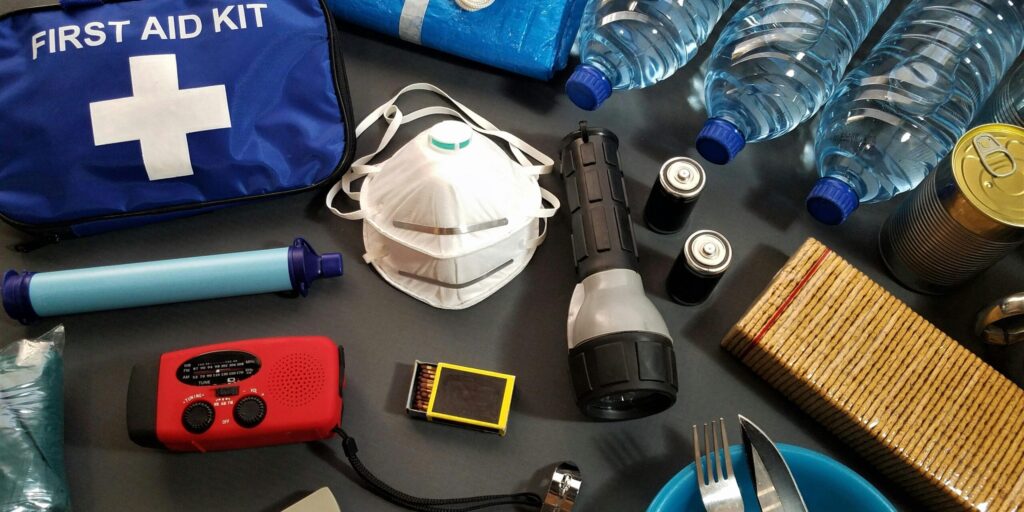Read time 7 minutes
A personal journey through chronic illness and the tools that helped me cope
Living with chronic illness is like being thrown into a storm without a forecast. You never quite know when the winds will pick up, when the skies will darken, or when your body will betray you again.

For me, the storm was relentless and it came with a name: Isaacs’ Syndrome. It is a rare autoimmune neuromuscular disorder that turned my peripheral nervous system into a live wire. It caused constant muscle twitching, cramps, and fatigue. It seeped into every corner of my life.
But Isaacs’ wasn’t the only passenger on this journey. My diagnostic path revealed a constellation of conditions that complicated everything:
- Lyme disease, which attacked my joints, heart, and nervous system
- Glaucoma, a degenerative eye disease that damaged my optic nerve
- Membranous Glomerulonephritis, a progressive kidney disorder
- Diabetes and Blood Pressure issues, which added layers of complexity to daily care
- Irritable Bowel Syndrome (IBS), which made nutrition and comfort a daily challenge
Each condition brought its own set of symptoms, medications, and emotional tolls.
The Basic Challenges Before My Flare-Up Survival Kit

1. Unpredictable Flare-Ups:
Each condition flares differently. One day it’s nerve pain, the next it’s digestive distress or vision issues. I never knew what to expect, which made preparation nearly impossible.
2. Lack of Tailored Resources
Most advice online is generic. Living with multiple chronic illnesses meant I had to piece together my own solutions, often through painful trial and error.
3. Emotional Burnout
The mental toll of managing overlapping symptoms was exhausting. I felt overwhelmed, anxious, and often defeated by the unpredictability of my own body.
4. Financial and Accessibility Barriers
Essential items like cooling pads, compression gloves, or low-vision tools weren’t always affordable or easy to find. Insurance rarely covered what truly helped during a flare.
5. Nutritional Conflicts
With IBS and diabetes, even choosing snacks for my kit was complicated. I had to find options that wouldn’t spike my blood sugar or trigger digestive pain.
6. Medication Management
Coordinating medications for nerve pain, kidney health, blood pressure, and digestive comfort was a logistical nightmare—especially during a flare when thinking clearly was hardest.
And while I couldn’t control when a flare-up would strike, I could control how prepared I was. That’s when I began building my Flare-Up Survival Kit. It was a personalized collection of items, tools, and comforts that helped me navigate the worst days.
This kit wasn’t just about physical relief. It was about emotional survival, mental clarity, and reclaiming a sense of agency in a body that often felt like foreign territory.
1. Medical Must-Haves: My Emergency Armour

When you live with multiple chronic conditions, your medication routine becomes a lifeline. I kept a compact, labeled organizer within arm’s reach, sorted by time of day and urgency.
It included:
1. Muscle relaxants and anti-spasmodics:
For Isaacs’ Syndrome flare-ups, when twitching and cramps made even sitting still unbearable
2. Pain relievers:
Carefully chosen to avoid kidney strain while still offering some relief
3. Eye drops and pressure meds:
Glaucoma doesn’t wait, and skipping doses wasn’t an option
4. Insulin and glucose tabs:
Diabetes demanded constant vigilance, especially during stress-induced spikes or crashes
5. Blood pressure monitor:
A quick check could mean the difference between a manageable day and a hospital visit
6. Antibiotics or antivirals:
For Lyme-related flare-ups, when prescribed
I also kept a printed copy of my medical history, medication list, and emergency contacts in a folder. On days when brain fog took over, this folder spoke for me.
2. Comfort Items: Creating Calmness

Pain isn’t just physical, it’s emotional and exhausting. So I surrounded myself with items that offered comfort, even in small doses:
1. Weighted blanket:
The gentle pressure helped soothe my overactive nervous system, especially during Isaacs’ episodes
2. Heating pad and ice packs:
For muscle cramps, joint pain, and kidney discomfort
3. Loose, breathable clothing:
Soft fabrics that didn’t irritate my skin or add pressure
4. Essential oils:
Lavender for calm, peppermint for nausea—small sensory escapes that grounded me
5. Eye mask and blackout curtains:
For days when light sensitivity from glaucoma made the world unbearable
These weren’t luxuries. They were survival tools. When my body felt like a war zone, these items reminded me that I deserved gentleness.
3. Digital Lifelines: Tech That Became My Companion

Technology became more than convenience, it became a connecting tool, distraction, and empowerment.
1. Symptom tracker apps:
Logging flare-ups helped me identify patterns and advocate for myself during appointments
2. Meditation and breathing apps:
Guided sessions helped me manage anxiety and regain a sense of control
3. Audiobooks and podcasts:
Reading strained my eyes, but listening let me escape into stories and ideas
4. Telehealth access:
A lifeline when leaving the house wasn’t feasible
5. Music playlists:
Curated with songs and discourses that reminded me of strength, softness, and survival
On days when I couldn’t leave bed, my phone became a portal to calm, and to hope.
4. Gut-Friendly Snacks & Hydration: Navigating IBS and Kidney Health

Nutrition was a balancing act. IBS made eating unpredictable, and my kidneys demanded caution.
So, I curated a stash of safe, soothing options:
1. Plain rice crackers and bananas:
Gentle on the gut and easy to digest
2. Electrolyte drinks:
To stay hydrated without overloading my kidneys
3. Herbal teas:
Chamomile for calmness and ginger for nausea
4. Probiotic supplements:
When approved by my doctor, they helped regulate my gut
There was a time when I also kept a food diary. It was not to obsess, but to understand. Every bite was a negotiation, and I learned to listen to my body’s whispers before they became screams.
5. Emotional Anchors: For the Days I Felt Lost

Chronic illness doesn’t just attack the body, it eroded my identity, confidence, and connections. So, I built emotional anchors into my kit:
1. Blogs:
A space to vent, reflect, or simply scribble
2. Letters to myself:
Written on better days, reminding that all is well
3. Affirmation cards:
Initially I had them in my room. “I am not my illness.” “This pain will pass.” etc.
4. A small beach stone:
From a trip I once took, reminding me that I had stood in the sun, felt the waves, and laughed once and I would again
These items didn’t fix anything. But they reminded me that I was more than my symptoms. That I was still me.
6. Movement Tools: Gentle Ways to Reconnect with My Body

Isaacs’ Syndrome made movement feel chaotic. But stillness wasn’t always the answer. I kept tools that allowed for gentle engagement:
1. Stretch bands:
For light resistance when my muscles needed activation
2. Foam roller:
To release tension without triggering spasms
3. Yoga mat:
Not for full routines, but for lying down and breathing intentionally
4. Guided movement videos:
Tailored for chronic pain and fatigue
I learned to ask: “What does my body need right now?” Sometimes the answer was movement. Sometimes it was rest. Both were valid.
7. Advocacy Tools: Because I Had to Be My Own Champion

Over time I realized that I often understood more about my body than the professionals I met. So I kept:
1. Medical records binder:
Lab results, imaging, specialist notes, all in one place
2. Symptom timeline:
To show progression and patterns
3. Questions list:
For upcoming appointments, because brain fog is real
4. Support group contacts:
Online communities where I wasn’t alone
5. Insurance documents:
Because nothing pauses for pain
Being prepared wasn’t just about comfort, it was about power. I deserved to be heard, and my survival kit helped me speak louder.
Why My Flare-Up Survival Kit — Changed A Lot

Creating a personalized Chronic Illness Flare-Up Kit gave me a sense of control. It’s now my lifeline during unpredictable episodes. It includes essentials like:
- Fast-acting medications
- Low-glycemic snacks
- Vision aids
- Comfort items for IBS
- Emergency contacts and care instructions
This kit isn’t just practical, it’s empowering. It reminds me that I’m prepared, even when my body isn’t cooperating.
Final Thoughts
It wasn’t just a survival kit, it was a quiet revolution.
A way to turn pain into preparation, fear into foresight. It was my way of saying, ”I still matter.”
Each item in my kit told a story. Of pain, yes, but also of resilience. Of learning to listen to my body, honor my limits, and fight for joy in the margins.
If you’re building your own kit, start small. Ask yourself:
- What brings me comfort?
- What helps me feel safe?
- What reminds me I’m still me?
Because on the toughest days, those reminders aren’t just helpful, they’re everything.
Disclaimer
This article reflects my personal journey and does not constitute medical advice. Please consult health professionals before making any lifestyle changes.


